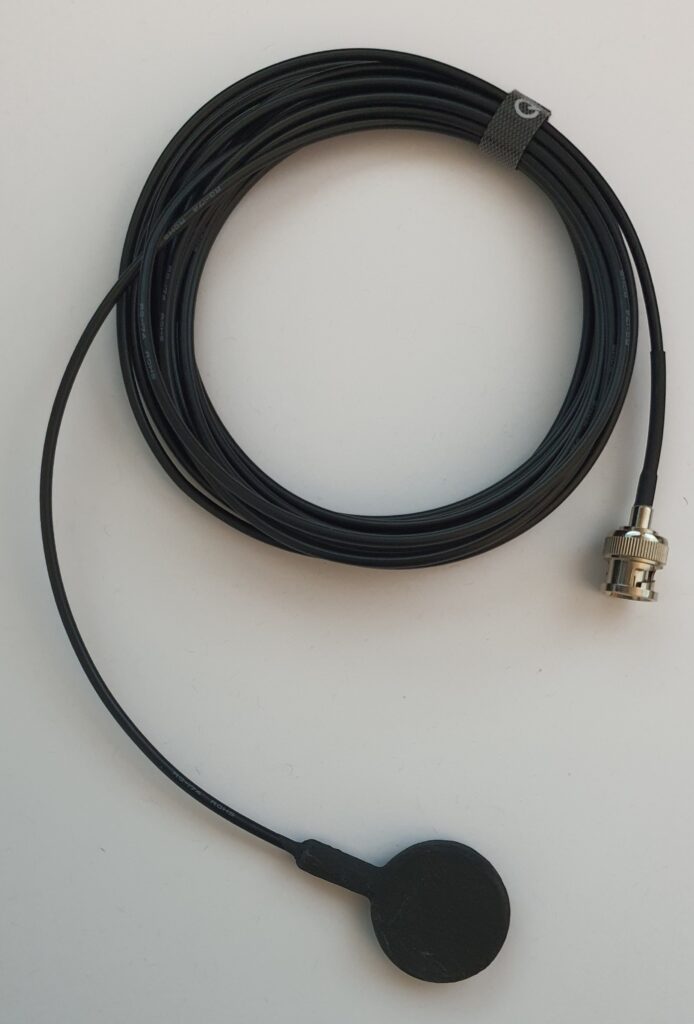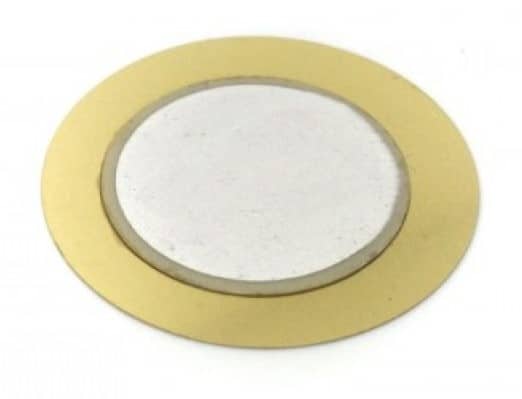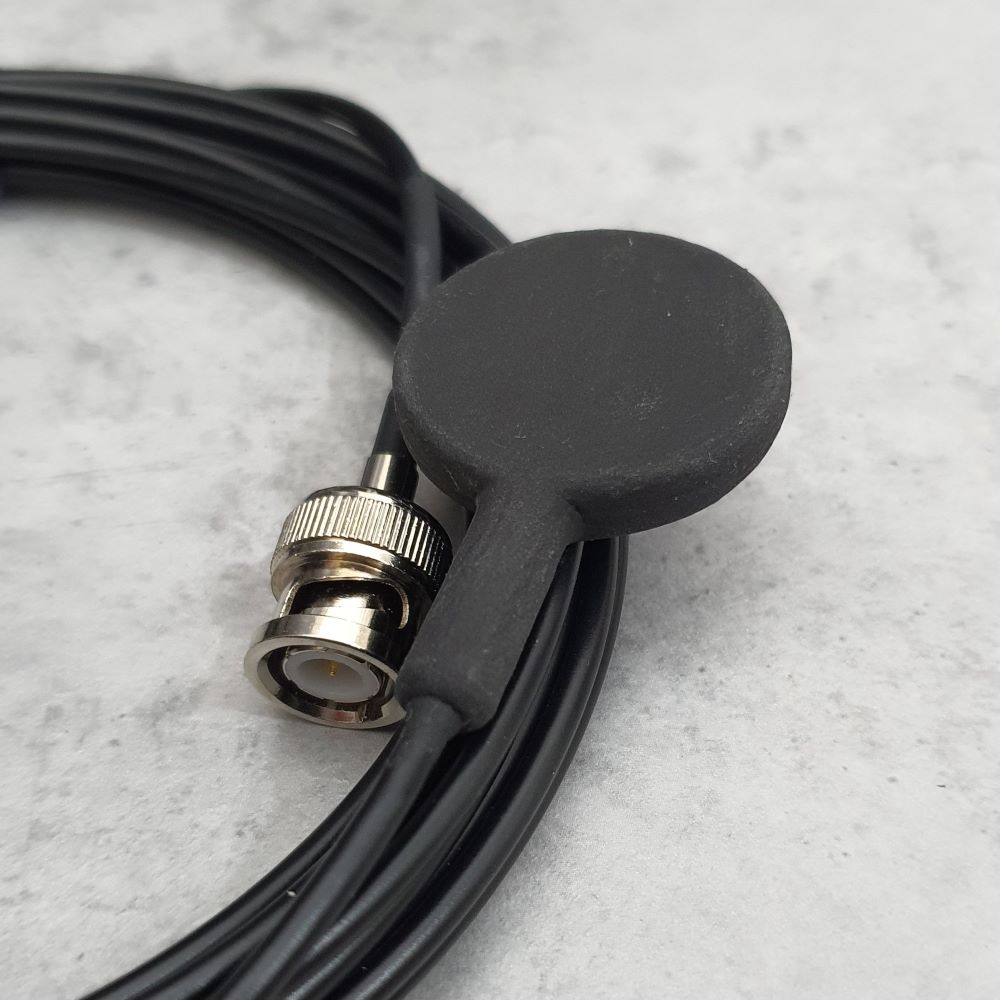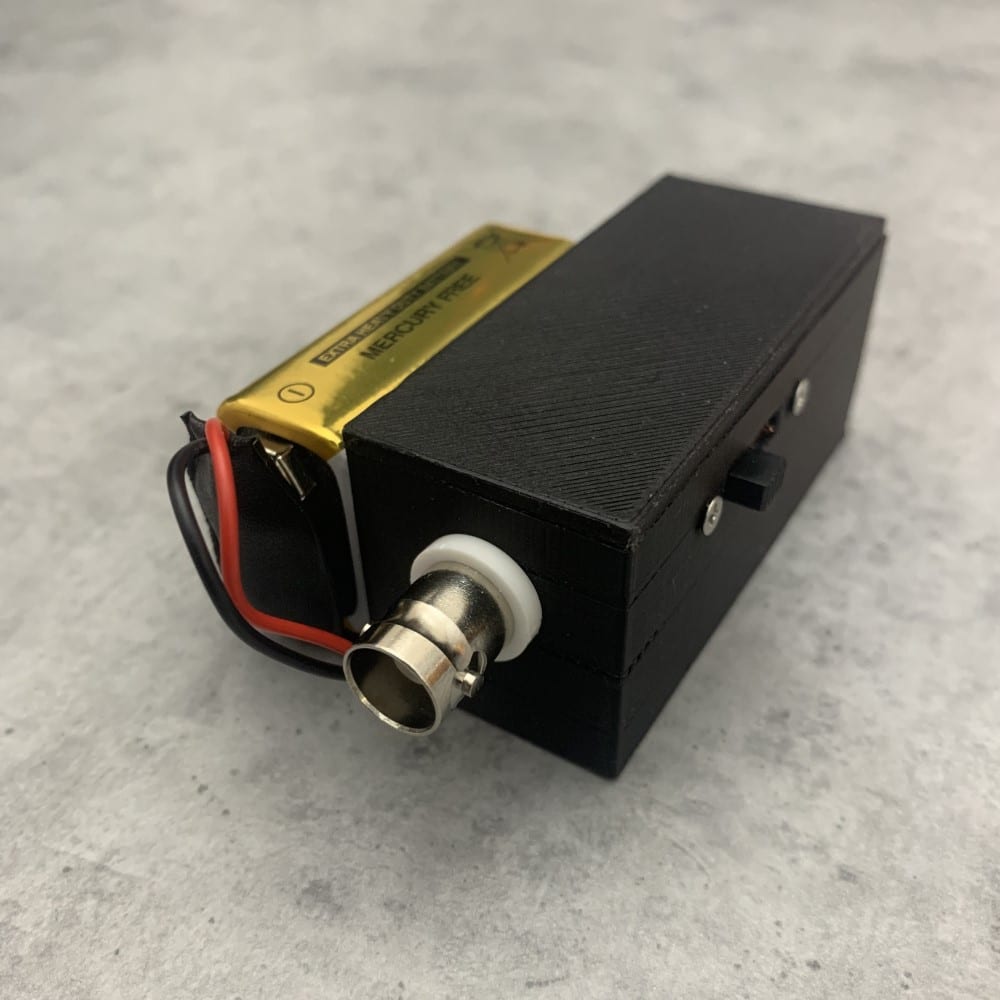What is a Hydrophone Used for
Affordable low cost hydrophone: Your Gateway to the Underwater Symphony
Welcome to the mesmerizing realm of underwater acoustics. Hydrophones, the ears of the ocean, allow us to tune into the symphony of marine life, and with the affordability of low cost hydrophones, this window to the underwater world is now accessible to all. In this blog, we unravel the myriad facets of a low cost hydrophone, shedding light on why they stand out as a smart choice for both beginners and seasoned enthusiasts. Unlike their calibrated counterparts, which may be necessary for highly precise scientific measurements, low cost hydrophones offer a cost-effective entry point for a wide array of applications.

We'll delve into scenarios where calibration might not be imperative, making these affordable options an attractive proposition for many underwater listening endeavors. As we navigate through the depths of hydrophone technology, we'll explore how these versatile devices extend beyond scientific research. Discover how hydrophones can serve as powerful tools for sound creation, transforming the mysterious sounds of the deep into artistic compositions. From capturing the haunting calls of marine mammals to the rhythmic symphony of coral reefs, the possibilities for sonic exploration are as vast as the ocean itself.
Understanding the essential accessories is key to unlocking the full potential of your hydrophone. Among these, the preamplifier emerges as a crucial companion. We'll unravel why a preamplifier is a vital accessory, boosting the faint signals captured by the hydrophone and ensuring clarity and fidelity in your recordings.
So, whether you're an aspiring marine biologist, an underwater sound artist, or simply a curious soul eager to explore the unseen world beneath the waves, join us on this journey as we dive deep into the wonders of low-cost hydrophones. Let the echoes below become the melody of your aquatic adventure.

Types of Hydrophones
A hydrophone is a specialized underwater microphone designed to detect and record sound waves in aquatic environments. It is a transducer that converts acoustic signals, such as those produced by marine animals or underwater activities, into electrical signals that can be analyzed, recorded, or broadcast. Hydrophones play a crucial role in various fields, including marine biology, oceanography, environmental monitoring, and underwater exploration, providing a means to capture and study the sounds of the underwater world.
Hydrophones come in various types, each designed for specific applications. From omnidirectional hydrophones capturing sounds from all directions to directional ones focusing on specific sources, understanding these types can enhance your underwater listening experience.
Hydrophones come in various types, each employing distinct sensing elements and work principles. We'll unravel the mysteries behind piezoelectric, magnetostrictive, and fiber optic hydrophones, exploring how their unique mechanisms translate underwater vibrations into audible signals.
Hydrophones come in various types, each employing distinct sensing elements and work principles tailored to specific applications.
Piezoelectric Hydrophones
Work Principle: These hydrophones use piezoelectric crystals that generate electrical signals when subjected to pressure changes, such as underwater sound waves.
Advantages: Piezoelectric hydrophones are sensitive and offer a wide frequency response, making them suitable for a broad range of applications.

Disadvantages: They can be more delicate and may require careful handling to avoid damage.
Magnetostrictive Hydrophones
Work Principle: Magnetostrictive hydrophones rely on the change in magnetic properties of certain materials when subjected to mechanical stress, converting this change into an electrical signal.
Advantages: Known for their high sensitivity and ability to capture low-frequency sounds.
Disadvantages: May be bulkier compared to other types.

Fiber Optic Hydrophones
Work Principle: These hydrophones use optical fibers to detect changes in pressure, translating them into optical signals that are then converted to electrical signals.
Advantages: Immune to electromagnetic interference, making them suitable for specific applications.
Disadvantages: Complex technology and higher cost compared to other types.
Membrane Hydrophones
Work Principle: Membrane hydrophones utilize a flexible membrane that moves in response to pressure changes, generating an electrical signal.
Advantages: Simple design and cost-effectiveness.
Disadvantages: Limited frequency response compared to other types.
Low-Cost Hydrophones
Low-cost hydrophones often fall under the category of piezoelectric or membrane hydrophones. While they may have some limitations compared to their more expensive counterparts, they provide a practical and economical solution for a wide range of applications, including marine exploration, hobbyist projects, and educational purposes. The affordability of these hydrophones makes them an attractive choice for those taking their first plunge into underwater acoustics.
We manufacture hydrophones featuring a combination of piezoelectric and membrane technologies, amalgamating the strengths of both to deliver superior sound quality and heightened sensitivity across a broad frequency spectrum at low cost.
Key Parameters to Consider
Selecting the right hydrophone involves understanding key parameters. Sensitivity, frequency response, and impedance are crucial factors to consider. Sensitivity determines the hydrophone's ability to detect faint sounds, while frequency response indicates the range of frequencies it can capture. Matching the hydrophone's impedance with your recording equipment ensures optimal signal transfer.
Certainly, let's delve into the technical parameters of a hydrophone:
Sensitivity
Sensitivity refers to the hydrophone's ability to convert acoustic pressure into an electrical signal. It is usually measured in units of volts per unit of pressure (e.g., microvolts per Pascal).
Higher sensitivity allows the hydrophone to detect lower-intensity sounds, making it more effective for capturing faint underwater signals.
Frequency Response
Frequency response represents the range of frequencies over which the hydrophone can accurately capture sound. It is typically expressed in Hertz (Hz).
The broader the frequency response, the more versatile the hydrophone is in capturing a wide range of sounds, from low-frequency rumbles to high-frequency clicks.
Impedance
Impedance is the opposition to the flow of electrical current in the hydrophone circuit and is measured in ohms.
Matching the hydrophone's impedance with the recording or monitoring equipment ensures efficient signal transfer, preventing signal degradation.
Radiation Pattern
The radiation pattern describes how the hydrophone's sensitivity varies with the direction of incoming sound waves. It is often depicted as a polar plot.
Understanding the radiation pattern helps in positioning the hydrophone for optimal signal capture. Omnidirectional hydrophones capture sounds from all directions, while directional hydrophones focus on specific angles.
These parameters collectively influence the hydrophone's performance in different underwater scenarios. When selecting a hydrophone, it's essential to consider these technical specifications based on the intended application, whether it be marine research, environmental monitoring, or underwater acoustics.
Choosing the Right Hydrophone
To select the ideal hydrophone, consider your specific needs. Are you interested in marine biology research, underwater audio recording, or simply exploring the mysteries of the ocean's soundscape? Low-cost hydrophones cater to various purposes, and understanding your requirements will guide you toward the perfect choice.
We believe that our hydrophones strike an optimal balance between cost and quality, featuring excellent sensitivity and delivering high-quality sound across a frequency range extending up to 20 kHz and beyond. This makes them an ideal choice for both newcomers and professionals in the field.
Applications and Environments
Hydrophones open up a world of possibilities in diverse environments. Whether you're exploring the quiet depths of a lake, the lively sounds of a coral reef, or the haunting calls of whales in the open ocean, low-cost hydrophones provide an affordable entry point for enthusiasts and professionals alike.
Hydrophones are versatile devices that find applications in various fields due to their ability to capture underwater sounds with precision. Here are several scenarios where hydrophones can be effectively employed:
Underwater Sound Exploration
Marine Biology Research: Hydrophones are essential tools for marine biologists studying the communication and behavior of marine life. They enable the recording of underwater sounds made by aquatic organisms such as whales, dolphins, and fish, providing valuable insights into their ecology.
Earth Sound Recording
Contact Microphone for Earth Sounds: Hydrophones can be repurposed as contact microphones to capture vibrations and sounds generated by the Earth. Placed on solid surfaces, they can pick up subtle movements, seismic activity, or the natural sounds of the environment, offering a unique perspective for geologists, seismologists, or nature sound enthusiasts.
Ice and Snow Monitoring
Glacial and Arctic Studies: Hydrophones are used to monitor and record sounds associated with ice and snow, contributing to research on glacial movement and Arctic environments. They can capture the creaking and cracking sounds of icebergs or the underwater sounds in icy regions, aiding scientists in understanding climate-related changes.
Underwater Engineering and Infrastructure Monitoring
Inspection of Underwater Structures: Hydrophones play a crucial role in inspecting and monitoring underwater structures such as dams, bridges, and pipelines. They can detect anomalies, leaks, or structural issues by analyzing underwater sounds, ensuring the integrity of these critical installations.
Underwater Archaeology
Exploration of Submerged Sites: Hydrophones assist archaeologists in exploring and documenting submerged archaeological sites. By capturing underwater sounds, they can uncover potential areas of interest and study the acoustic environment of underwater historical locations.
Environmental Monitoring
Ecoacoustics and Habitat Assessment: Hydrophones contribute to ecoacoustic studies by recording underwater soundscape dynamics. This aids in assessing the health of aquatic habitats, studying biodiversity, and monitoring the impact of human activities on underwater ecosystems.
Educational and Recreational Use
Aquatic Education Programs: Hydrophones can be employed in educational programs to engage students in underwater exploration. They provide a hands-on experience, allowing learners to discover the unique sounds of the underwater world.
The versatility of hydrophones extends beyond traditional marine applications, making them valuable tools for scientists, researchers, educators, and enthusiasts across a spectrum of disciplines. The ability to capture sounds in diverse environments opens up new possibilities for understanding and appreciating the acoustic complexities of our planet.
Essential Accessories
Essential accessories play a crucial role in optimizing the performance of hydrophones and ensuring successful deployment in various fields. Here are three key accessories—preamplifiers, recording devices, and extension cables—along with their significance and how their selection may depend on the field of use:
Preamplifier
Hydrophones typically produce low-level electrical signals in response to underwater sounds. A preamplifier is essential to boost these weak signals to a level suitable for recording or analysis. It enhances the signal-to-noise ratio, allowing for clearer and more accurate recordings.
In fields where precision and sensitivity are paramount, such as marine biology research or underwater acoustics, a high-quality preamplifier is crucial. The choice may also depend on the hydrophone's specifications, ensuring compatibility for optimal signal amplification.
Recording Device
A recording device is necessary for capturing and storing the signals received by the hydrophone. It may range from portable audio recorders to specialized data loggers.
The recording device should have the capability to handle the hydrophone's output, ensuring accurate and high-fidelity recordings.
Depending on the field of use, the recording device's features become crucial. For marine biology, a device with extended recording time and durable, waterproof construction may be essential. In contrast, environmental monitoring applications might require devices with data logging capabilities and low power consumption for long-term deployments.
Extension Cable
Hydrophones are often deployed in locations where the recording device cannot be directly placed. Extension cables provide the necessary reach to connect the hydrophone to the recording equipment. They should maintain signal integrity over an extended distance.
In marine research or infrastructure monitoring, where deployments may be at significant depths or distances from the recording equipment, durable and water-resistant extension cables become critical. For applications such as educational programs, flexible and lightweight cables may suffice.
Selecting the right accessories is integral to the success of hydrophone deployments in diverse environments. The choice may depend on factors such as the depth of deployment, the duration of monitoring, environmental conditions, and the specific requirements of the research or exploration endeavor. Tailoring the accessories to the field of use ensures that hydrophones operate effectively and deliver accurate, reliable data for scientific, educational, or recreational purposes.
Getting Started
Embarking on your journey into underwater acoustics is an exciting endeavor, and getting started with low-cost hydrophones opens a gateway to explore the hidden sounds of the aquatic world. Here's a step-by-step guide on how to dive into this captivating realm:
Understanding Your Needs. Why Start with Low-Cost Hydrophones?
Low-cost hydrophones offer an affordable entry point for enthusiasts, students, and professionals exploring underwater acoustics. They provide a cost-effective way to engage in various applications without compromising on essential features.
Selecting the Right Hydrophone. Key Considerations.
Determine your specific interests, whether it's marine biology, environmental monitoring, or simply capturing the sounds of the underwater world. Low-cost hydrophones cater to a range of purposes, allowing you to choose the one that aligns with your goals.
Essential Accessories
Preamplifier
A preamplifier boosts the weak signals captured by the hydrophone, ensuring clearer and more accurate recordings. This is especially crucial when dealing with faint underwater sounds.
In environments with low ambient noise, such as serene lakes or quiet coral reefs, a preamplifier becomes essential to capture subtle aquatic sounds.
Recording Device
A recording device allows you to capture, store, and analyze the sounds picked up by the hydrophone. Choose a device with sufficient storage capacity and compatibility with hydrophone or preamplifier outputs.
For field researchers or marine biologists, a portable and waterproof recording device is crucial for on-the-go data collection in diverse aquatic settings.
Extension Cable
An extension cable provides flexibility in deploying the hydrophone at varying depths. It ensures that the hydrophone can be strategically positioned without limiting its reach.
In scenarios where the hydrophone needs to be submerged at greater depths, such as oceanic research or underwater infrastructure inspection, a longer extension cable becomes indispensable.
Setting Up Your Hydrophone
Assemble the hydrophone, preamplifier, and recording device following the manufacturer's guidelines.
Ensure all connections are secure, and waterproof seals are intact, especially if deploying the hydrophone in submerged environments.
Choosing Your Deployment Site
Select a location based on your interests. Whether it's a tranquil freshwater lake, a bustling coral reef, or the open ocean, consider the specific soundscape you hope to capture.
Capturing Your First Sounds
Submerge the hydrophone to the desired depth, ensuring it is securely anchored.
Start the recording device and monitor the sounds in real-time.
Experiment with different depths and locations to capture a diverse range of underwater sounds.
Analyzing and Enjoying Your Recordings
Transfer your recordings to a computer for analysis using audio software.
Identify and enjoy the fascinating sounds of marine life, underwater currents, and ambient oceanic noises.
Conclusion
In conclusion, starting your hydrophone journey with affordable equipment provides an accessible avenue to explore the wonders of underwater acoustics. Low-cost hydrophones and accessories offer a practical and efficient solution for various applications, making them the right choice for beginners and seasoned enthusiasts alike. Dive in and let the echoes below enchant your senses!
With the right knowledge and equipment, you can unlock the mysteries of the deep and contribute to our understanding of marine environments.



Very informative! Happy that people are still interested in this subject.